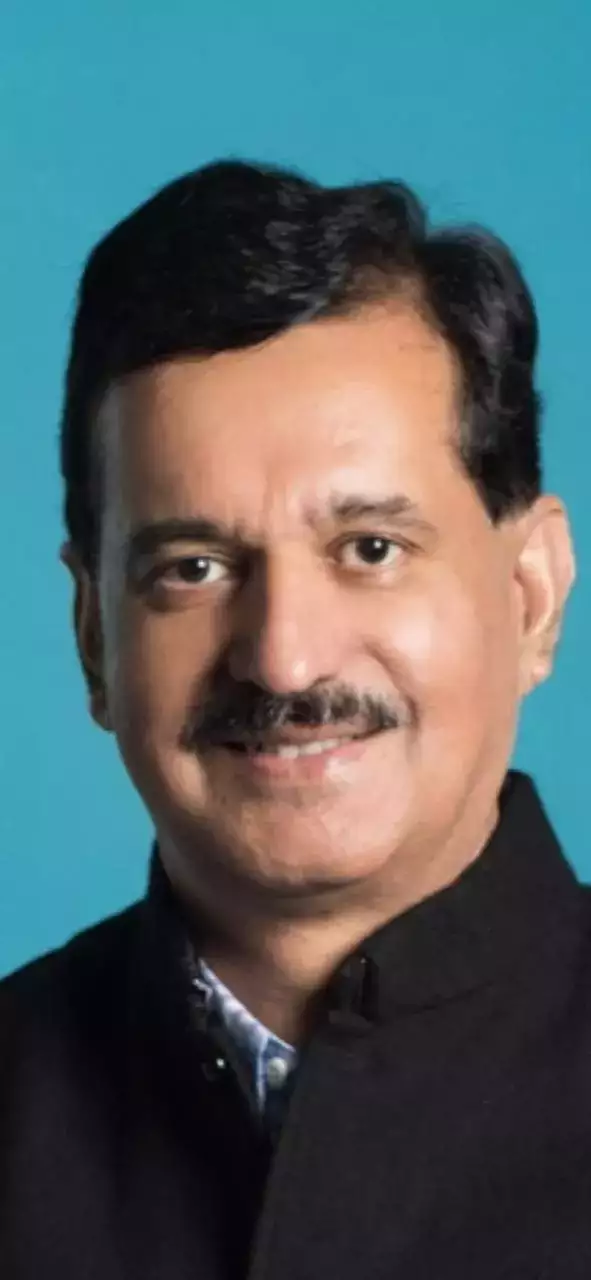 Experts and researchers argue that complete "openness," where car owners can select their operating system (OS) much like on a laptop or desktop PC, may be a far-fetched reality due to significant safety and security concerns.
Experts and researchers argue that complete "openness," where car owners can select their operating system (OS) much like on a laptop or desktop PC, may be a far-fetched reality due to significant safety and security concerns.Will the future of mobility be all about open cars, one that are loaded with flexible software and third-party integration, or will it be about closed cars with proprietary systems? Well, the answer is simple as put by experts and researchers, it is going to be a mix approach while the relevance of a vehicle and its manufacturer will increasingly depend on how much advanced technology is embedded and how seamless the user experience becomes. The key for automakers will be finding the right balance, ensuring security while delivering cutting-edge features that cater to a tech-savvy generation of drivers.
"Open cars" will be like "information technology systems on wheels," continuously receiving software updates that enhance both the driving experience and on-the-go functionality. This approach offers car owners greater freedom to upgrade their vehicle's features over time, much like how we upgrade our smartphones. On the other hand, "closed cars" resemble fixed systems, akin to DVD players with region controls, limiting flexibility and locking users into predefined settings. The shift towards open systems will redefine automotive marketing and innovation strategies, extending vehicle relevance and reshaping the industry's future.
However, there is a catch. Experts and researchers argue that complete "openness," where car owners can select their operating system (OS) much like on a laptop or desktop PC, may be a far-fetched reality due to significant safety and security concerns. The potential for physical harm, cybersecurity risks, and system vulnerabilities make it unlikely that cars will offer the same level of OS flexibility as personal computers. Automakers will need to carefully balance innovation with strict controls to ensure both safety and user experience.
 Rajeev Singh, Partner and Consumer Industry Leader, Deloitte AP
Rajeev Singh, Partner and Consumer Industry Leader, Deloitte AP“With the advent of Software Defined Vehicles (SDVs), I believe it will be a hybrid model where the OS remains proprietary to OEMs due to safety and security concerns, while additional features and functionalities could come from open-source programs developed by ecosystem players,” says Rajeev Singh, Partner and Consumer Industry Leader, Deloitte AP. These features would be regularly upgraded over-the-air. One of the main drivers for embracing open-source elements is cost efficiency, both in terms of development and testing, as it allows manufacturers to innovate while keeping expenses in check and ensuring vehicle safety.
 Lothar Determann, partner at Baker McKenzie, Palo Alto, California; law professor at Free University Berlin, Germany
Lothar Determann, partner at Baker McKenzie, Palo Alto, California; law professor at Free University Berlin, Germany“Technological advances, changing consumer preferences, demographics, smart cities, and regulation will all have an impact on how open or closed cars will be in the future. Car manufacturers are certainly apprehensive of what happened to computer makers that opened up their systems to allow running software made by different companies. Mobile apps and app ecosystems offer additional lessons. But they rightfully emphasize that cars are different products, given their physical harm potential and that car owners can tolerate a software crash or reboot much less than a computer user,” says Lothar Determann, partner at Baker McKenzie, Palo Alto, California; law professor at Free University Berlin, Germany, he along with Bruce Perens, one of the founders of the Open Source movement in software, and CEO of companies – Legal Engineering and Algoram, have extensively researched and written on the topic of “open cars” (article published in Berkeley Technology Law Journal).
Determann adds, “I expect a mixed approach. Different manufacturers will take different approaches, reacting to the preferences that buyers and users express, for example, regarding entertainment systems, communication services, and mixed fleet telematics management.”
Indicating that there is an increasing trend of outsourcing of infotainment-related software development in automotive, Determann adds, “A few OEMs make their own, proprietary software, but most automakers are shifting to relatively open software platforms made by third parties for infotainment related functions and apply different degrees of barriers to access and connectivity for independent app and aftermarket part providers. Safety critical components relating to drivetrain and battery management remain closed and proprietary.”
Singh shares, “Hardware will become more like a commodity, while the true distinction will come from the architecture they build into their vehicles. This architecture will enable continuous software development and upgrades over the next 3 to 5 years of vehicle use, creating a more dynamic and evolving user experience.” He elaborates that the software development on to the car would be broadly under the buckets such as powertrain performance, ADAS features, body features, and infotainment.
“You cannot achieve customer loyalty or deliver an exceptional experience just once. The key is to continuously enhance the customer experience using the same hardware. Unlike today, the future will be about adding new features to cars over-the-air every 3 or 6 months, giving customers an ever-evolving and improved experience,” Singh further points. This constant stream of updates will keep vehicles feeling fresh and relevant, ensuring that the customer engagement doesn’t stop after the initial purchase.
 Arun Malhotra, Auto industry expert and former MD of Nissan India
Arun Malhotra, Auto industry expert and former MD of Nissan India“The automotive industry is traditional and evolving at its own pace, unlike faster-moving sectors such as mobile phones or software electronics,” says Arun Malhotra, an auto industry expert and former MD of Nissan India. “Cars already have a lot of software related to safety, navigation, and infotainment, which companies use to continuously improve systems. However, the data they have access to hasn’t been completely mined and engaged yet. The industry operates as a learning machine, with companies aiming to protect their rights and resist open architectures. While firms like Reliance and Airtel provide onboard software to automakers in India, these platforms are not open; they are developed for specific companies and purposes,” he adds.
Interestingly, the first-ever computer integration in an automobile took place back in 1968 and in 80’s vehicle diagnosis systems slowly became integral with many computers assisting the vehicle to adhere the emission norms. Today, it is believed that a car contains over 100 million lines of software codes.
Highlighting that the data collection and usage of that data for development of AI-powered features for vehicle systems continues to be a concern with many countries closing doors on open data access, Determann says, “Countries preventing data collection will suffer from a technological deficit in the long-term and will likely not be able to bridge the gap easily. Geopolitical differences in regulations of data collection, needed for the development of AI related functions will likely play a major role in determining which automakers, advanced driver assist systems, and autonomous vehicles can succeed in the long run – and, where.”
"Right to Repair" presents another challenge for open cars. Granting repair shops and service centres access to critical data can raise safety concerns, though such access is essential for the seamless functioning of open vehicles. In places like Massachusetts and Maine, "Right to Repair" laws provide car owners with strong rights to access vehicle data and make it available to repair shops of their choice, while also enabling the use of independent telematics systems and other services. “This approach promotes openness, usability, and competition,” explains Determann. The EU Data Act may push for even broader changes in this direction.
However, these laws can conflict with safety regulations. Some regulators oppose "Right to Repair" initiatives, fearing that allowing independent mechanics—who may not be trained or certified by original equipment manufacturers (OEMs)—to access critical components could pose significant safety risks. Balancing openness with safety remains a contentious issue.
He further added that data collected in one geographic area cannot be applied to areas with different traffic rules and appearances, weather conditions. Developers need training data on geographic particularities, Determann shares, “To develop safe advanced driver assistance systems (ADAS) and self-driving systems, companies have to maximise scenario coverage of operational design domains (ODD) both for training and testing purposes.”
“If OEMs open platforms, then there is true sense of competition in the market, however if they chose for proprietary systems then it would cost them and also, they will be competition only with themselves in such a scenario,” points Singh.
 Warren Harris, CEO & MD, Tata Technologies
Warren Harris, CEO & MD, Tata TechnologiesSpeaking about the geopolitical concerns and cloud around data-related regulations in the world, Warren Harris, CEO & MD, Tata Technologies, says, “The geopolitics between China and the rest of the world is generating concerns over the access of data. The policy issues are still playing catch up and that is what we really need to accelerate. We need to bring public and private sector together to really ensure that we really get there.”
Harris further adds, “Societal bias, geopolitics and technology options – those things will continue to be leveraged in different ways by different countries.” Harris was speaking on the sidelines of the Tata Technologies and BMW Group’s JV announcement - BMW TechWorks India.




